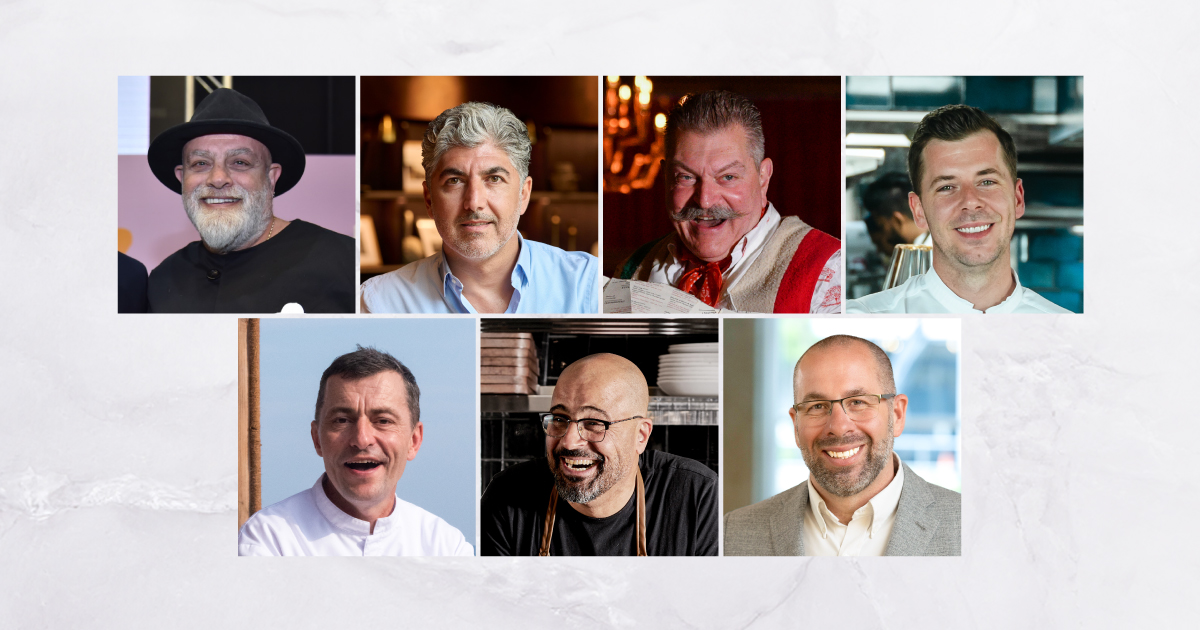

A global approach
There are several trends making waves in the meat segment, with global flavors and fusion leading the way. Think jerk flavor with kim chi salad, for example, where diverse cuisines are blended together. Chefs are experimenting with international spices, sauces and cooking techniques to create unique and diverse beef dishes. They are also exploring alternative cooking methods, such as sous-vide, smoking and braising, to achieve different textures and flavors in beef dishes. Dry-aging beef has become a popular approach to enhance flavor and tenderness. Other trends of note include a focus on artisanal and craft approaches and customization, with chefs allowing diners to choose preferred cooking styles and accompaniments. Significantly, a rise in street food and casual formats is making high quality beef accessible in more casual settings. Another trend in evidence is restaurants incorporating interactive elements into their beef dishes, such as tableside grilling and carving, or presentations that engage diners in the processes involved.
Flavorful cuts
We are seeing a growing interest in utilizing alternative cuts in the kitchen, with chefs exploring lesser-known, flavorful cuts. These include chuck short ribs which are fantastic when braised, and shank, which is often used in soups or osso buco. While ground beef immediately prompts ideas of burgers, there are other blends and applications for it, in dishes like Japanese katsu and kafta, for example.
Creating a wow factor
The starting point has to be using top quality ingredients, like the Certified Angus Beef ® brand. Bringing creativity to dishes by experimenting with innovative techniques and methods will help to give a wow factor. I’m also a great believer in the importance of storytelling – for example, we ensure the story of our top quality beef is fully understood, from
its taste and source to its certification. Striving to achieve consistency must also be a priority.

JOE BARZA
Culinary consultant and owner Joe Barza Culinary Consultancy
joebarza.com
@chefjoebarza
Alternative ideas
One of the most prominent current trends is the growing use of non-traditional cuts of beef. This doesn’t mean that traditional favorites, such as sirloin, fillet and ribeye, risk being abandoned – rather, they are being supplemented with alternative cuts. These cuts, which include flank, rump, oyster blade and skirt, require greater creativity in preparation and serving techniques. Additionally, the slow-cooked, smoked meat trend is still going strong. However, it is taking on new flavors, with the integration of ingredients from diverse cultures and the incorporation of innovative spice combinations. In another development, the plate-sharing dining trend has expanded to include meats, with beef cuts being prepared for sharing.
Techniques from A-Z
Meat plays a key role in many different types of cuisines and cultures. The varieties commonly featured in most worldwide cuisines are beef and lamb, although pork typically dominates Asian cuisine. Each culture also has its own cooking techniques for meats; for example, in Australia, grilling, roasting and pan-frying are the preferred cooking methods for meat, including a typical big juicy steak. Stewing and barbequing are the predominant methods used in the Middle East, such as the popular barbecued meat brochettes, for example, while the Far East is associated more with stir-frying and steaming.
Step-by-step success
To make a standout signature meat dish, it is imperative, firstly, to select the appropriate cut for the designated recipe and prepare it using the correct cooking style. The second key point is to create a spice mix and choose a condiment selection that complements the flavor of the meat. A chef must also know and understand what they want to achieve with this dish to ensure their message is conveyed to guests. Oversight of the entire process, from meat selection to the presentation and service of the dish, are additional essential contributory factors.

KAMIL BOULOOT
Head of culinary & operations ME
Seagrass Boutique Hospitality Group
kamilbouloot.com
@kamilbouloot
Rethinking the steakhouse model
I believe we should perhaps be moving from the concept of a super traditional steakhouse to a ‘whole cow house.’ Using all parts of the animal effectively reduces waste. In turn, less waste means that we can use fewer animals and give them more space, which will help with the emission problem that’s such a hot topic today. This is a philosophy I follow. My animals graze and move around freely where they are located in the National Park of the Pyrenees, having done so through the generations for more than 150 years.
Back to basics
Certain cuts have been forgotten over time, with the result that we’ve ended up concentrating on just a few, easy-to-prepare varieties, such as the T-bone and the fillet, forgetting that historically, animals were slaughtered so that communities could be fed. I feel this is a distortion of how we should be using meat. In my opinion, every part of the animal should be used well, from nose to tail, out of respect for it.
The importance of education
Our philosophy is to use each ingredient in the best way possible, including the less noble cuts, like the ones that we use to make our beef, onion and tomato stew, for example, and beef heart skewers. Underrated cuts that spring to mind include beef knuckles, which feature in our popular dish ‘tenerumia in insalata,’ a beef salad that is made from the boiled knees cartilage. Eating wonderful food together undoubtedly adds a convivial atmosphere to the dining experience.
There is also a responsibility for butchers to educate customers by explaining that all cuts can be as delicious as each other if they’re from well-raised animals and the meat is prepared properly. Explaining that shoulder cuts need to be braised for the correct length of time is one example.

DARIO CECCHINI
Butcher and founder Carna by Dario Cecchini
ennismore.com and dariocecchini.com
@dariocecchinimacellaio
Long-term trends
Culinary trends come and go, as in any industry. However, there are some that I believe will be around for the long term. Two that spring to mind are:
• Sustainability: there is a growing emphasis on sustainable and ethically sourced meat, which includes a focus on locally raised, grass-fed and organic options.
• Nose-to-tail cooking: utilizing the entire animal is gaining popularity as chefs explore lesser-known cuts and offal, minimizing waste and showcasing the full potential of each animal.
Second to none
Personally, I find secondary cuts interesting to use. I enjoy the added motivation they require when it comes to preparing and presenting them in dishes. Aside from this, it’s a fact that offal is also very tasty, even
though it may not be the most attractive meat visually. One example is oxtail, which is often considered underrated due to its tough nature. When cooked properly, however, it becomes incredibly flavorful and
tender, making it ideal for stews, soups and braised dishes.
Special touches
There are several ways of adding something extra special to a dish and making it stand out from the crowd. Some of the ideas that come to mind are:
• Experimenting with flavor profiles: try out different spice blends, marinades and sauces to create distinctive flavors.
• Being creative in presentation: a dish’s appearance can greatly enhance its appeal. Play with plating techniques and garnishes.
• Selecting ingredients carefully: incorporating local or seasonal high-quality ingredients into a dish will give it a sense of place and freshness.
• Varying cooking techniques: explore sous vide, smoking or other modern cooking methods to give traditional dishes a twist.
• Adding emotion through storytelling: share the story behind your dish. This could be a source of inspiration or the journey involved in selecting the ingredients. Storytelling helps to create a connection with diners.

BOJAN CIRJANIC
Executive chef
Folly – Gates Hospitality
folly.ae
@follydubai @bojan_cirjanic
Meeting changing demands
In recent years, there has been a notable shift in food consumption patterns and market dynamics within the culinary industry. This transformation is a direct response to changing consumer preferences and an increased awareness of food sourcing and its environmental impact.
As a result, there is a surge in demand for meats that adhere to ethical and sustainable practices. This growing demand is evident in the preference for sustainably and ethically raised meats, with an emphasis
on qualities such as being grass-fed, free-range, pasture-raised, chemical-free and locally sourced. Together with the rise in the popularity of plant-based and alternative protein sources, this trend reflects a broader movement toward conscious eating and a more environmentally friendly approach to food choices.
Butcher’s secret
The story goes that butchers would keep the beef hanger steak for themselves, calling it the ‘butcher’s choice.’ Despite not being as popular as more well-known cuts, mainly due to its limited availability (each animal produces only one hanger steak), this hidden gem offers rich, deep flavors and a unique tenderness. Known for its impressive marbling and umami richness, the beef hanger steak is considered one of the best for grilling. It is also a great fit for various dishes, from strongly spiced recipes to delightful marinades.
Culinary traditions
Meat-eating has been a part of human history for thousands of years. However, the utilization of meat in various global cuisines is often shaped by culture, religion and geographical factors. Different regions exhibit distinctive cooking methods, flavor profiles and preferences for certain types of meat, with specific cultures even deeming some unfit for consumption. In Europe, for example, there is a higher consumption of beef compared to other countries. Meanwhile, lamb and goat are particularly popular across the Middle East and its culinary traditions. To the East, pork and chicken have always played central roles in Asian cuisine.

KEVIN JEAN FAWKES
Executive chef
Six Senses Zighy Bay, Oman
sixsenses.com/en/resorts/zighy-bay
A shift in mindset
Some of the cuts that we’ve been talking about for years are finally getting the attention they deserve. One of my favorites is the rump, a boneless, five-muscled primal cut from the back part of the animal. Each piece is completely different in taste and appearance. This provides chefs with a huge number of options and opportunities, like serving an entire restaurant of diners with one cut, if they choose to do so. Some businesses are adopting this method with cuts of their choice, including a steakhouse in London which I know works in the same way with flat iron steak. Admittedly, this process requires skill, flexibility and creativity, alongside a shift in mindset away from the idea of serving only ribeye, tenderloin and striploin, for example.
More than mince
Other cuts gaining popularity right now include the flank, which is a beautiful piece of meat, and oyster blade. Both of these work well in various cooking methods, from roasting to grilling. I’m also delighted to see brisket enjoying a new lease of life. For years, this cut was only really used for mince, but it’s now routinely being prepared in a variety of ways, including smoked – something I’m proud to say I began doing in Jordan 15 years ago.
Window on the world
Nowadays we have access to a huge range of ideas for preparing and cooking meat, thanks in part to the internet, which has provided a groundbreaking window on the world, and travel. Today, we can infuse cuisines from across the globe with a variety of flavors, using numerous techniques. With such a choice of cooking methods spanning different cultures at chefs’ fingertips, it’s never been easier for them to find a way of making their meat dishes stand out. From grilling, stewing and braising to frying, smoking, pulling and then glazing, the possibilities are infinite.

TAREK IBRAHIM
CEO and founder of Umami Restaurants Certified master chef by the World Association Ambassador,
Meat and Livestock Australia Celebrity chef on Egyptian and international television
@cheftarekibrahim ; @umami.eg ; @aussiebeeflambme
Convenience combined with quality
One key trend evident is the emphasis on convenience. In today’s hectic lifestyles, consumers prioritize options that save time and money, without compromising on quality. Home meal replacements (HMRs) align seamlessly with this trend, especially for US beef. These products serve as a swift and convenient solution for busy people. US prime graded beef finds its way into both HMRs and restaurant meal replacement items, which gain further attraction due to their pre-portioned sizes, appealing to consumers seeking to manage calorie intake and reduce food waste.
All in the taste
The promotion of awareness about US meat in the Middle East is a multifaceted effort led by the United States Meat Export Federation (USMEF). We collaborate closely with importers, retailers and the foodservice industry to ensure a comprehensive approach to marketing and education. One key aspect of our strategy involves maintaining strong relationships with chef associations. USMEF also organizes frequent master classes featuring renowned experts.
To reach consumers directly, USMEF collaborates with retailers in the market. Promotional activities, such as tastings at the point of sale, allow consumers to savor the exceptional quality of US beef.
Prioritizing sustainability
A commitment to sustainability is deeply ingrained in the livelihood of beef producers, as their success relies on responsible stewardship of the land and animals under their care. Ninety-one percent of beef cattle operations are family-owned, with 78 percent of beef farmers and ranchers intending to pass their operations on to future generations. The use of range and pasture lands for livestock grazing is widespread. Importantly, these lands are found in all 50 states, contributing to the economic fabric of diverse communities. By championing sustainable practices and embracing a holistic approach to land and animal management, our organization and the US beef industry are actively contributing to the well-being of both the environment and future generations. Additionally, efforts are being made to explore innovative packaging solutions that align with sustainability goals.

SCOTT REYNOLDS
Assistant vice president of marketing programs
United States Meat Export Federation
usmef.org; usameat.me
@usameatme














